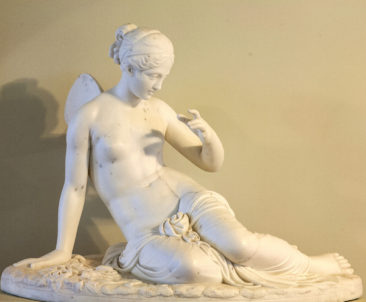

Contemporaries compared his work with antique statues, and indeed, the masterpieces of Antonio Canova differ extraordinary elegance, smooth shapes and impeccable composition. He achieved unprecedented fame, carried out orders for Pope Pius VII, was almost a court sculptor at the court of Napoleon I. when painting classicism was dominated by David, the sculpture was not equal to Antonio Canova.
He was born on November 1, 1757 in a very poor family of stonemason, very early orphaned. Venetian Senator Giovanni Faliero, to whom the boy entered the service, allowed the young man to study sculpture, to study ancient art. In 1775, the eighteen-year-old Canova created his first significant work “Orpheus and Eurydice”. It was a resounding success, and Antonio Canova was able to open his own Studio in Venice.
In 1779, on the order of the Venetian patrician, the sculptural group “Daedalus and Icarus”was born. This is the first work in which Canova used X-shaped composition. The axis of symmetry passes through the center of the sculpture, but the figures of Icarus and Daedalus are deviated from each other. This technique the master used in the future.
In 1780, Antonio Canova moved to Rome, where he worked a lot, continuing to study the skills of ancient sculptors. In 1802 Canova received an offer to come to Paris to create a statue of Napoleon.
The sculptor spent the last years of his life at home in possano, near Bassano. The master died in Venice in 1822 and was buried in the mausoleum (which he designed) of the Cathedral of Santa Maria Gloriosa dei Frari.
In the Voronezh regional art Museum. I. N. Kramskoi presented a copy of the famous sculpture of Antonio Canova “Psyche”. According to ancient Greek mythology Psyche was the personification of the soul, and was depicted as a girl with butterfly wings. The elegance of the statue, its measured balanced composition is emphasized by the perfection and smoothness of the lines.